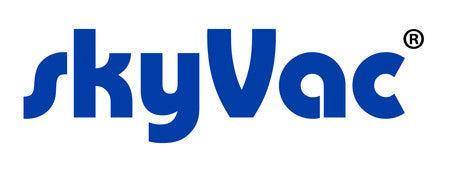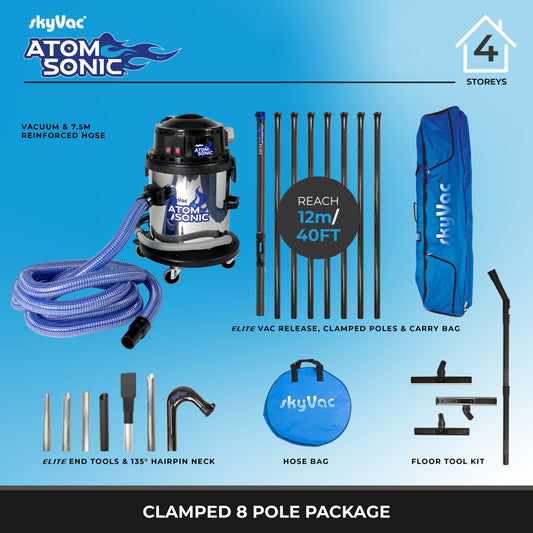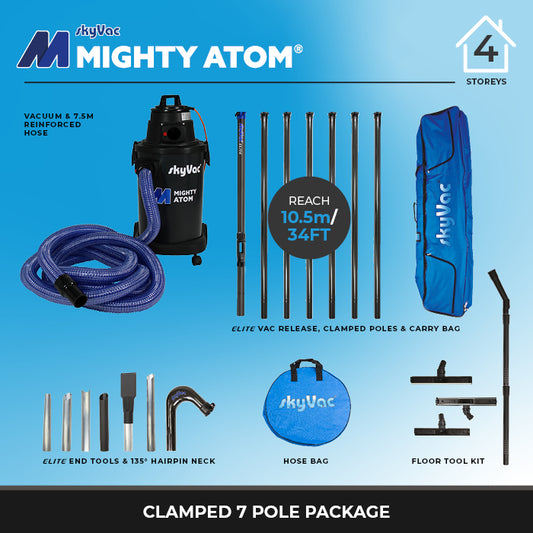Preserving Heritage Sites with Specialized High Dusting Techniques
Share
Cleaning historic buildings is no easy task. These structures often hold a wealth of history and intricate details that require special care. High dusting for historic buildings is a specialized technique aimed at preserving these sites while ensuring they remain safe and appealing. In this article, we’ll explore what high dusting entails, the tools used, and best practices for maintaining these treasured landmarks.
Key Takeaways
- High dusting is essential for preserving historic buildings and involves specialized techniques to avoid damage.
- Using advanced tools and eco-friendly solutions can enhance the safety and effectiveness of the cleaning process.
- Developing a tailored cleaning plan and training staff is crucial for maintaining the integrity of heritage sites.
Understanding High Dusting for Historic Buildings

The Importance of Specialized Techniques
When it comes to historic buildings, we can't just grab any old duster and start swiping. These structures are filled with delicate materials and intricate details that require a gentle touch. Using the wrong methods can cause irreversible damage, which is why specialized high dusting techniques are so important. We need to consider the unique challenges each building presents, from the types of dust and debris to the fragility of the surfaces. Think about it: a careless swipe could dislodge a piece of decorative molding or scratch a priceless artifact. It's our responsibility to preserve these sites for future generations, and that starts with understanding the right way to clean them. For example, gutter vacuum systems are a great way to clean without damaging the building.
Challenges in Cleaning Heritage Sites
Okay, so what makes cleaning heritage sites so tricky? Well, for starters, we're often dealing with extreme heights and hard-to-reach areas. Think soaring ceilings, ornate cornices, and intricate carvings. Then there's the dust itself. It's not just your everyday household dust; it can be a mix of pollutants, organic matter, and even remnants of past restoration work. Plus, many of these buildings have poor ventilation, which means dust accumulates quickly and can be difficult to remove. And let's not forget the delicate nature of the materials. We're talking about things like antique plaster, gilded surfaces, and fragile textiles, all of which require a very careful approach. We need to assess the environmental and structural impact to understand the cleaning needs and long-term preservation. Here's a quick rundown of common challenges:
- Height and Accessibility
- Dust Composition
- Material Sensitivity
- Ventilation Issues
To tackle these challenges, we need to be prepared with the right tools, techniques, and a whole lot of patience. Using high dusting practices is essential for maintaining cleanliness and safety.
Innovative Tools for Effective High Dusting

As we continue our journey into the world of heritage site preservation, it's clear that having the right tools is half the battle. Traditional methods often fall short when dealing with the unique challenges presented by historic buildings. That's why we're excited to share some of the innovative tools that are making high dusting safer, more efficient, and more effective than ever before. Let's explore the equipment and solutions that are helping us protect our shared history.
Advanced Equipment for Safe Cleaning
When it comes to high dusting in heritage sites, safety is paramount. We need equipment that not only gets the job done but also protects both the cleaning professionals and the delicate surfaces they're working on. One of the most significant advancements has been the development of high-reach cleaning systems. These systems, like those offered by SkyVac, allow us to clean hard-to-reach areas from the ground, eliminating the need for ladders and scaffolding. This reduces the risk of falls and minimizes the potential for damage to the building's structure.
Here are some tools we find invaluable:
- High-Reach Vacuum Systems: These systems use powerful suction to remove dust and debris from ceilings, beams, and other high surfaces. Models like the SkyVac 85 are designed for heavy-duty cleaning tasks, making them perfect for commercial use and larger properties. The SkyVac system can reach up to 40 feet from the ground.
- Specialized Brushes: Different surfaces require different types of brushes. Soft brushes, such as horsehair or goat hair brushes, are ideal for delicate objects, while stiffer brushes can be used on more durable surfaces. The right brush is essential for effective high dusting.
- Camera Systems: Attachable camera systems allow us to inspect areas before and after cleaning, ensuring that we're not missing any spots and that our methods are effective. The SkyVac Camera System is compatible with several poles.
Eco-Friendly Solutions for Preservation
Preserving heritage sites isn't just about removing dust; it's also about protecting the environment. That's why we're always on the lookout for eco-friendly cleaning solutions that minimize our impact on the planet.
Here's what we consider when choosing solutions:
- Pure Water Cleaning: Systems like Ionic Systems' Reach & Wash® use pure water to clean exterior windows and surfaces without the need for harsh chemicals. This not only protects the environment but also prevents damage to delicate surfaces.
- Biodegradable Cleaning Products: When chemicals are necessary, we opt for biodegradable products that break down quickly and don't leave harmful residues.
- Steam Cleaning: For certain surfaces, steam cleaning can be an effective and eco-friendly way to remove dirt and grime. Goodbye Gum! offers compact, portable gum removal machines that utilize steam, heat, and biodegradable solutions.
By embracing these innovative tools and solutions, we can ensure that our heritage sites are not only clean but also preserved for future generations.
Best Practices in Heritage Site Maintenance
Creating a Customized Cleaning Plan
When it comes to heritage sites, one size definitely doesn't fit all. We need to start with a plan that's as unique as the building itself. This means taking a good, hard look at the building's architecture, the materials it's made of, and what kind of environmental challenges it faces. Think of it as a doctor's visit for a building – we're diagnosing its specific needs. A cleaning consultation can be a great starting point.
Here's what we usually consider:
- Detailed Assessment: We start with a thorough inspection to understand the building's layout, materials, and any specific conservation needs. It's like being a detective, but instead of solving a crime, we're solving a cleaning puzzle.
- Material Testing: We need to know what cleaning agents are safe to use on those delicate, historical surfaces. No harsh chemicals allowed! We want to protect the building's integrity, not damage it.
- Environmental Factors: Is the building in a humid area? Does it face heavy pollution? These things affect how we approach the cleaning process. We might suggest protective treatments to shield against pollutants and moisture.
Training for Cleaning Professionals
Having the right tools is only half the battle. The other half is knowing how to use them properly. That's why training for cleaning professionals is so important, especially when dealing with heritage sites. We need to make sure everyone on the team understands the delicate nature of these buildings and how to handle them with care.
Here's what our training usually covers:
- Safe Handling: How to work with fragile materials and at heights safely. We don't want any accidents!
- Equipment Maintenance: Proper cleaning and storage of equipment to keep it in top shape. Regular equipment maintenance is key.
- Heritage Compliance: Understanding and following local heritage preservation regulations. We need to respect the rules and guidelines.
We also emphasize the importance of documentation and reporting. Keeping detailed records of cleaning processes, products used, and the building's condition over time helps us track changes and adjust our strategies as needed. It's all about preserving these amazing places for future generations.
Taking care of heritage sites is really important. To keep these places safe and beautiful, we should follow some simple rules. First, always check the site for any damage and fix it right away. Next, use the right materials that match the original ones to keep the look the same. Finally, involve the community in caring for these sites, as they can help spread awareness and support. Want to learn more about how to protect our heritage? Visit our website for tips and resources!








